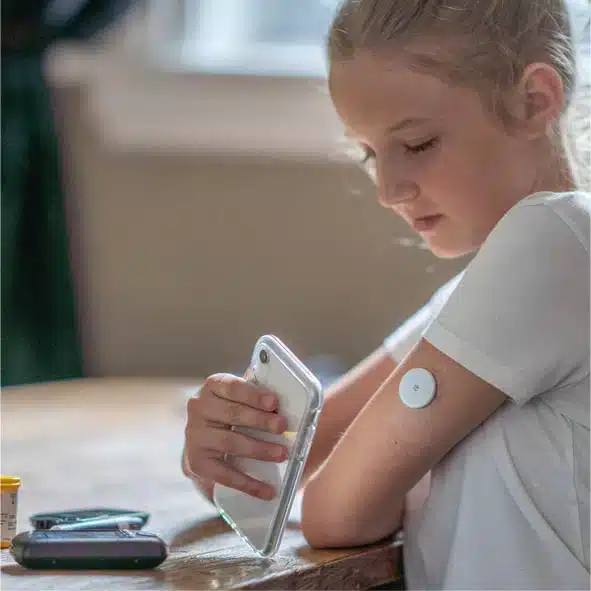Tomorrow is world diabetes day so on this week’s blog we’re talking all about diabetes; what it is, how to spot the symptoms and ways to manage it.
It’s important to be aware of the signs and symptoms as early diagnosis is key as it can cause a number of serious health complications if it goes untreated.
Diabetes UK estimates that 5.6 million people in the UK are living with diabetes, which is at an all-time high. They also estimate that 1.2 million people with Type 2 diabetes are yet to be diagnosed.

What is diabetes?
Diabetes is a condition that affects the body’s ability to regulate blood glucose (or blood sugar), a vital energy source from food. Insulin, a hormone produced by the pancreas, plays a critical role in controlling blood glucose. When someone has diabetes, their body either doesn’t produce enough insulin or can’t use it effectively. This causes glucose to build up in the bloodstream, leading to a range of health issues. There are two main types of diabetes, each with distinct causes, and symptoms, and both can occur in children.
Types of Diabetes
Type 1 Diabetes
Type 1 diabetes is an autoimmune condition where the immune system mistakenly attacks insulin-producing cells in the pancreas. The exact cause of this autoimmune reaction is unclear, but genetics and environmental factors may play a role. Because the body can no longer produce insulin, people with Type 1 diabetes must take insulin daily to manage blood glucose levels. Type 1 diabetes is more common in children and young adults and is often detected early.
Type 2 Diabetes
Type 2 diabetes occurs when the body either resists the effects of insulin or doesn’t produce enough of it. Unlike Type 1, Type 2 diabetes is largely linked to lifestyle factors such as poor diet, inactivity, and obesity. While it’s more common in adults, Type 2 diabetes is increasingly diagnosed in children, largely due to rising childhood obesity rates. Although insulin may be used as a treatment, Type 2 diabetes is often managed with lifestyle changes and oral medications.
Gestational Diabetes and Other Types
Although not relevant to children, gestational diabetes occurs during pregnancy and typically resolves after birth. Other rarer forms of diabetes can arise from genetic defects or other underlying medical conditions, but these are uncommon in children.
Recognising the Symptoms of Diabetes in Children
Identifying diabetes in children early is essential for effective management and to prevent complications. According to NHS guidelines, some symptoms are common to both types of diabetes, though they may be more pronounced in Type 1.
Here are key symptoms to look out for:
- Increased Thirst
Children with diabetes often feel unusually thirsty. This is because high blood glucose levels cause the body to pull fluids from tissues, leading to dehydration. If your child is constantly asking for water or other drinks, even at unusual times like during the night, this could be a sign of diabetes. - Frequent Urination
Alongside increased thirst, children with diabetes may need to urinate more frequently, including at night. This is a result of the body attempting to remove excess glucose through urine. If your child is experiencing bedwetting or an unusual increase in bathroom visits, it might be time to speak with a doctor. - Increased Hunger
Children with diabetes may feel hungry constantly because their body’s cells aren’t receiving the glucose they need, despite high blood glucose levels. As a result, they might eat more than usual, yet still experience weight loss. - Unexplained Weight Loss
Weight loss, especially in Type 1 diabetes, can happen because the body starts breaking down fat and muscle for energy when glucose isn’t available to cells. If your child is eating normally or even more than usual but is still losing weight, this is a significant symptom to be aware of. - Fatigue and Weakness
High blood sugar levels prevent glucose from entering cells, which can leave children feeling weak, tired, and unable to focus. If you notice persistent fatigue or lethargy in your child, diabetes could be a potential cause. - Blurred Vision
High glucose levels can affect fluid levels in the eyes, causing temporary vision changes. If your child mentions blurred or impaired vision, it’s worth investigating further. - Frequent Infections or Slow-Healing Wounds
Children with diabetes may be more prone to infections, such as urinary tract infections or skin infections, and their wounds may take longer to heal. This is due to compromised immune function in high-glucose environments. - Irritability and Behavioural Changes
Diabetes-related fatigue and other physical symptoms can affect a child’s mood and behaviour, leading to irritability, mood swings, or difficulty concentrating.
What To Do if You Suspect Your Child Has Diabetes
If your child displays several of these symptoms, it’s important to consult your GP. A doctor can perform simple tests, such as a blood glucose test or HbA1c test (which measures average blood sugar over the past three months), to confirm or rule out diabetes. Early diagnosis can prevent complications and help your child receive the care they need.
Treatment and Management of Diabetes in Children
The NHS recommends the following approaches for managing diabetes in children, depending on the type:
Type 1 Diabetes Treatment
- Insulin Therapy: Since children with Type 1 diabetes cannot produce insulin, they need insulin injections or an insulin pump to regulate blood glucose levels. This involves working with healthcare providers to determine the correct insulin dosage and schedule.
- Blood Glucose Monitoring: Regular blood glucose monitoring is essential. This can be done via finger prick tests or continuous glucose monitors (CGMs) that automatically track glucose levels throughout the day.
- Diet and Exercise: A balanced diet and regular physical activity are important in managing blood glucose. Carbohydrate counting helps determine how much insulin a child needs based on their food intake.
- Education and Support: Education programs provided by the NHS, such as the Diabetes Education and Self-Management for Ongoing and Newly Diagnosed (DESMOND), are available to help families learn more about managing diabetes.
Type 2 Diabetes Treatment
- Lifestyle Changes: Type 2 diabetes in children is often managed by improving diet, increasing physical activity, and managing weight. A diet that’s low in sugars and processed foods, and high in whole grains, fruits, and vegetables, can improve blood sugar levels.
- Medications: In some cases, doctors may prescribe oral medications like metformin to help control blood glucose.
- Monitoring and Support: Similar to Type 1, monitoring blood glucose levels is crucial. Ongoing education and support are provided through NHS services to help families maintain a healthy routine.
Long-term Health Management
Both types of diabetes require lifelong management, and the NHS offers numerous resources to support families of children with diabetes. Support groups, dietitians, mental health professionals, and paediatric endocrinologists can all play a role in ensuring that children with diabetes live healthy, balanced lives.
For more information about diabetes click here to visit the Diabetes UK website.
